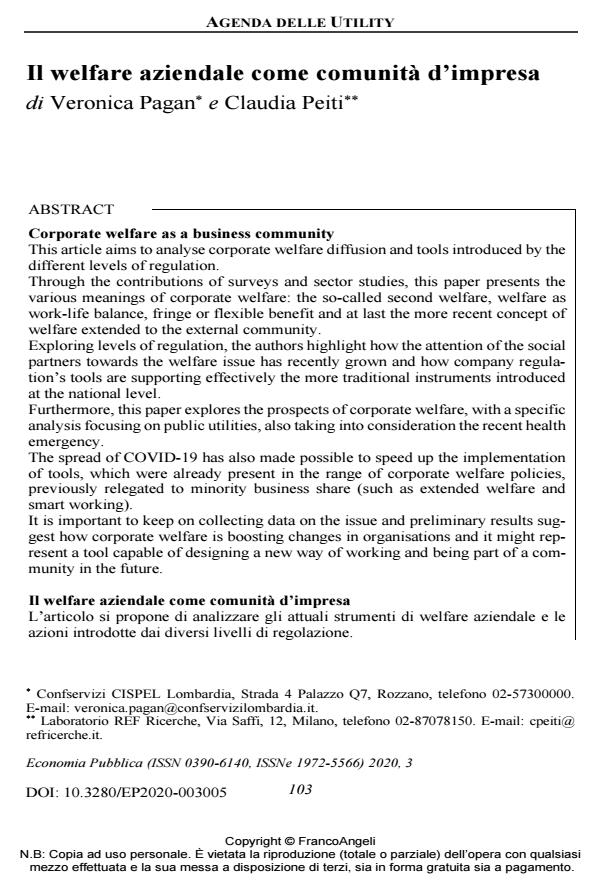Corporate welfare as a business community
Journal title ECONOMIA PUBBLICA
Author/s Veronica Pagan, Claudia Peiti
Publishing Year 2021 Issue 2020/3
Language Italian Pages 21 P. 103-123 File size 796 KB
DOI 10.3280/EP2020-003005
DOI is like a bar code for intellectual property: to have more infomation
click here
Below, you can see the article first page
If you want to buy this article in PDF format, you can do it, following the instructions to buy download credits

FrancoAngeli is member of Publishers International Linking Association, Inc (PILA), a not-for-profit association which run the CrossRef service enabling links to and from online scholarly content.
This article aims to analyse corporate welfare diffusion and tools introduced by the different levels of regulation. Through the contributions of surveys and sector studies, this paper presents the various meanings of corporate welfare: the so-called second welfare, welfare as work-life balance, fringe or flexible benefit and at last the more recent concept of welfare extended to the external community. Exploring levels of regulation, the authors highlight how the attention of the so-cial partners towards the welfare issue has recently grown and how company regulation’s tools are supporting effectively the more traditional instruments in-troduced at the national level. Furthermore, this paper explores the prospects of corporate welfare, with a spe-cific analysis focusing on public utilities, also taking into consideration the recent health emergency. The spread of COVID-19 has also made possible to speed up the implementa-tion of tools, which were already present in the range of corporate welfare poli-cies, previously relegated to minority business share (such as extended welfare and smart working). It is important to keep on collecting data on the issue and preliminary results suggest how corporate welfare is boosting changes in organisations and it might represent a tool capable of designing a new way of working and being part of a community in the future.
Keywords: Corporate welfare, smart working, public utility
Jel codes: I31, I38, L32
Veronica Pagan, Claudia Peiti, Il welfare aziendale come comunità d’impresa in "ECONOMIA PUBBLICA " 3/2020, pp 103-123, DOI: 10.3280/EP2020-003005